How To Deadhead Dahlias In The Ground And In Pots (Find Out Now!)

Dahlias are a beautiful perennial flower that can last for a long time if you properly care for them. They come in a variety of colors and are a lovely addition to any garden.
To deadhead your Dahlias, regardless of whether they’re in the ground or in a pot, is first to find the dying blooms. Then with pruning shears, cut about 1/4 inch down from the bulb. Do this on all the dying Dahlias to help produce new blooms. You can also pinch and twist.
If you are a gardening aficionado, be sure to check out 13 Types of Trowels.
Deadheading helps prolong the beauty of your garden, helping flowers bloom and flourish. Dahlias also make excellent cuttings for gorgeous floral arrangements. However, before you dive into tending to your dahlias, it’s always wise to get a little know-how first.
Do You Need Landscaping Services?
Get free, zero-commitment quotes from pro contractors near you.

What Is Deadheading and Why Should You Do It?
When you let aging, damaged, or dead flowers remain on your plant, it stifles the growth of new flowers. Essentially, the plant will go to seed and start focusing all of its energy on producing more seeds. Therefore, it will no longer focus its efforts on growing new blooms.
Regular deadheading means you routinely remove these spent blooms from the plant to encourage and support new growth. The process keeps plants healthy and also improves your garden’s overall appeal.
Deadheading also helps you stay in-tune with your garden and aware of its overall condition since it’s a routine practice. You can check in on your plants, see how things are faring, and address any issues as they arise. This helps you maintain your garden and keep it looking its best.
Growing Dahlias
Dahlias are very impressive blooms that can add an instant wow factor to any garden. Although they are a relatively sturdy plant, it’s essential to give them the proper care.
Planting dahlias in the spring is best, as they typically start flowering mid-summer. The flowers will continue to bloom through the fall, up until the first frosts. However, depending on your hardiness zone, dahlias can hold up reasonably well in winter.
You can find your hardiness zone by checking out the USDA’s Plant Hardiness Zone Map. Basically, if you live in areas farther south, you can likely keep dahlias healthy through the winter. Otherwise, in cooler zones, you will need to bring your plants inside until spring.
Prepare the Soil for Dahlias
To get the most from your dahlias, select an area that gets a lot of sunshine. Choose tubers that feel firm to the touch, and before planting, proper soil preparation is critical.
Dahlias are heavy feeders and demand lots of nutrients. Therefore, it’s wise to add compost to the soil at the time of planting. A popular recommendation is to add a 5-10-15 fertilizer to the soil, about 2 pounds per 100 square feet.
Dig down into well-draining soil about 8 to 12 inches deep. The soil should also be more on the acidic side, with a pH of between 6.3 and 6.8. Then add in your fertilizer and mix it into the soil; you’ll use this soil to cover your dahlias.
Planting Dahlias
When you’re ready to plant your dahlias, place them about 3 inches deep in a prepared trench. For smaller dahlias, you can space them about 12 inches apart. However, larger plants need much more space, about three feet.
Once you’ve placed your tubers, cover them over with the cultivated soil. It’s also a good idea to use an organic mulch to help keep the soil moist and prevent weeds. Leave a small space between the plant’s base and the mulch to allow for proper airflow.
Caring for Dahlias
Dahlias need a deep watering about once or twice weekly; the soil should stay moist without being soggy. In addition to regular watering, use a 5-10-10 fertilizer once a month and stay on top of pest control.
Keeping your dahlias healthy will go a long way in preventing pests, as will removing weeds often. It’s also essential to clear out dead leaves and plant debris that can create perfect hiding spots for pests. Another good rule of thumb is to ensure your mulch is not more than three inches deep.
If you grow larger dahlias, prepare to stake them or support them in some way as they get bigger. When winter approaches, store the tubers inside until the spring.
If you live in a hardiness zone between 8 and 11, cut back your dahlias and mulch heavily. This will help get them through the winter. Finally, no matter when you plant dahlias, regular deadheading ensures your plant stays as healthy and beautiful as possible.
How to Deadhead Dahlias
Dahlias can keep flowering for quite a while with proper care and routine deadheading. Deadheading dahlias is a relatively straightforward two-step process: locate the spent flowers and remove them. However, you need to pay close attention to your dahlias, as it can be easy to remove the wrong thing.
Tools You Need for the Job:
- Pruning shears (or a pair of gardening scissors)
- Trash bin or garbage bag to toss spent flowers
Step 1: Find the Spent Flowers
This is the most critical part of deadheading dahlias, as completely spent flowers can closely resemble new buds. You certainly don’t want to snip off fresh up-and-coming blooms since your whole goal is to encourage new growth.
First, it’s best to deadhead your dahlias when you notice pollen on the plant or the colors start to fade. Another sign would be brown tips or shriveled petals.
However, if you wait a bit, and all of the petals have fallen from a flower, it can get trickier. Therefore, look closely at the shape of the head. If it’s a spent flower, you’ll notice a more cone shape. Plus, the sepals will have folded up to protect the plant’s reproductive organs.
In contrast, if you notice more of a rounded sphere, this is a new bud. The sepals will also be more fanned out below the bud.
Step 2: Remove the Spent Flowers
Once you’ve located a spent flower, use sharp shears to cut the flower stem. Instead of cutting directly below the flower, cut just above where the stem joins the plant’s main stem.
However, if you notice new buds already developing below the spent flowers, only cut back to these buds.
Collecting Dahlia Seeds
If you plan to use your dahlias for seeds, let them fully mature when fall arrives. Then you can collect the seed pods. Cut off the dead flowers (seed pods) and let them dry for about 4 to 6 weeks indoors. You can lay them flat or hang them.
Then, in early spring, bring the heads outside and crush them gently. Use a fan to blow away debris gently, so only seeds remain. Pick out the healthy seeds and store them in packets or a plastic bag until it’s time to plant.
More About Dahlias
It’s always nice to know a little something about what you grow in your garden. Here are a few fun tidbits about the lovely dahlia:
- Dahlias get their name from the Swedish botanist, Anders Dahl. He initially classified the beautiful blooms as a vegetable because they had edible tubers. That’s right, you can eat Dahlia tubers, although most people don’t these days.
- Dahlias are a symbol of commitment, making them a popular floral choice for weddings. They also stand for other positive qualities like creativity and strength.
- Like many other colorful flowers, you can find dahlias in every color except for blue.
- Dahlias come from the same family as zinnias and daisies.
- The Aztecs used dahlias for treating skin wounds and rashes and for treating epilepsy.
- Many people use dahlia petals to make a soothing foot soak.
Do You Need Landscaping Services?
Get free, zero-commitment quotes from pro contractors near you.

Related Questions
Can you grow dahlias in pots?
Yes, dahlias can actually do reasonably well when you grow them in containers. However, it’s important to use a good potting mix and fertilize your dahlias regularly. It’s also critical to ensure you use a pot that provides adequate drainage. Use a large pot, about 12 to 14 inches in diameter and a minimum of 12 inches deep. If you start your dahlias indoors, consider using a grow-light once the plant comes through the soil. If you plant them outside, wait until after the last frost, unless you can easily move the pot indoors. If planting larger varieties of dahlias, use a sturdy, heavy pot to avoid tipping.
What should you do with dahlias in the winter if it’s too cold outside?
If you don’t live in a warmer plant hardiness zone, it’s best to keep your dahlia tubers indoors during winter. Dig up the tuber (from about one foot away from the plant) and let them rest in a shady, dry spot. Make sure to shake off any excess dirt. After a few days, remove any remaining dirt and pack healthy tubers in some damp peat moss. Place them upside down in the moss. Check them monthly to ensure they stay healthy and keep them inside. If they start to look dry or shriveled, you can mist them with water. Also, toss out any diseased tubers. Once spring approaches, you can replant the tubers and follow the same routine for planting and care as before.
Related Guides

Stacy Randall is a wife, mother, and freelance writer from NOLA that has always had a love for DIY projects, home organization, and making spaces beautiful. Together with her husband, she has been spending the last several years lovingly renovating her grandparent's former home, making it their own and learning a lot about life along the way.
More by Stacy Randall




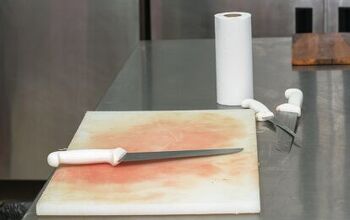



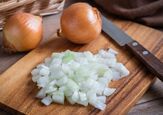
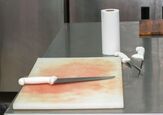

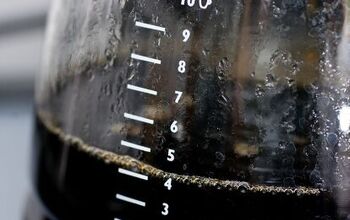
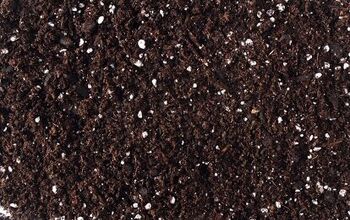

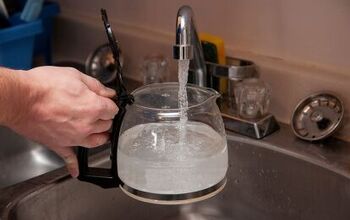











![Cost To Drill A Well [Pricing Per Foot & Cost By State]](https://cdn-fastly.upgradedhome.com/media/2023/07/31/9074980/cost-to-drill-a-well-pricing-per-foot-cost-by-state.jpg?size=350x220)
